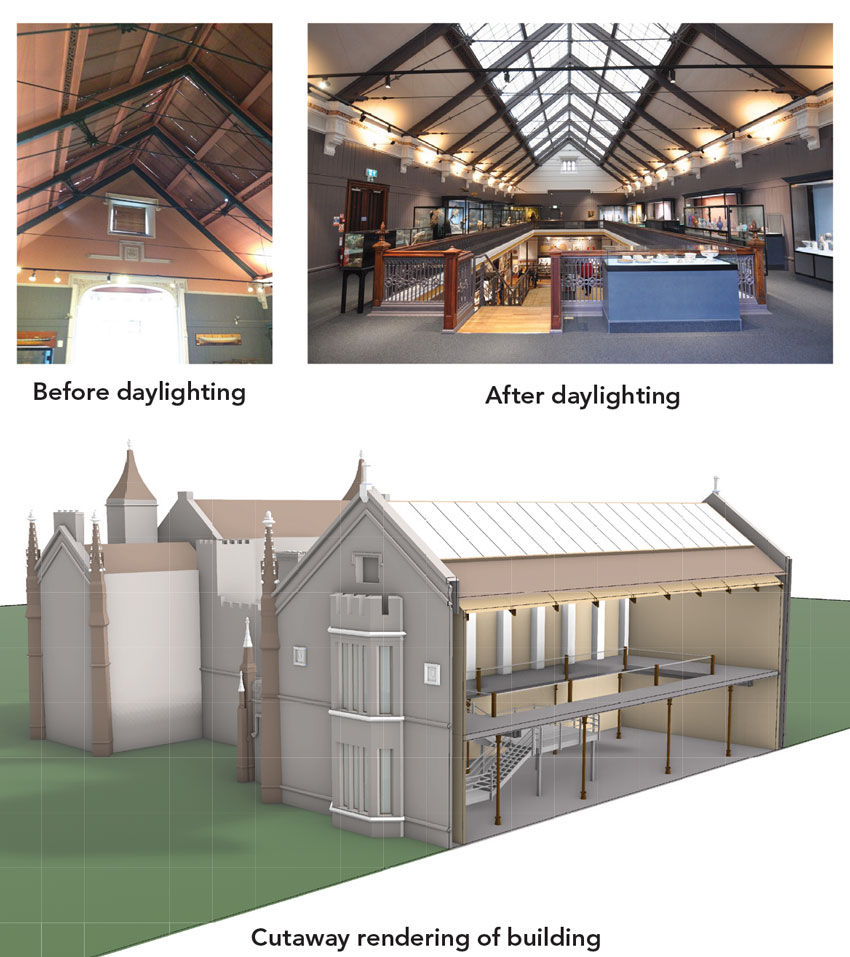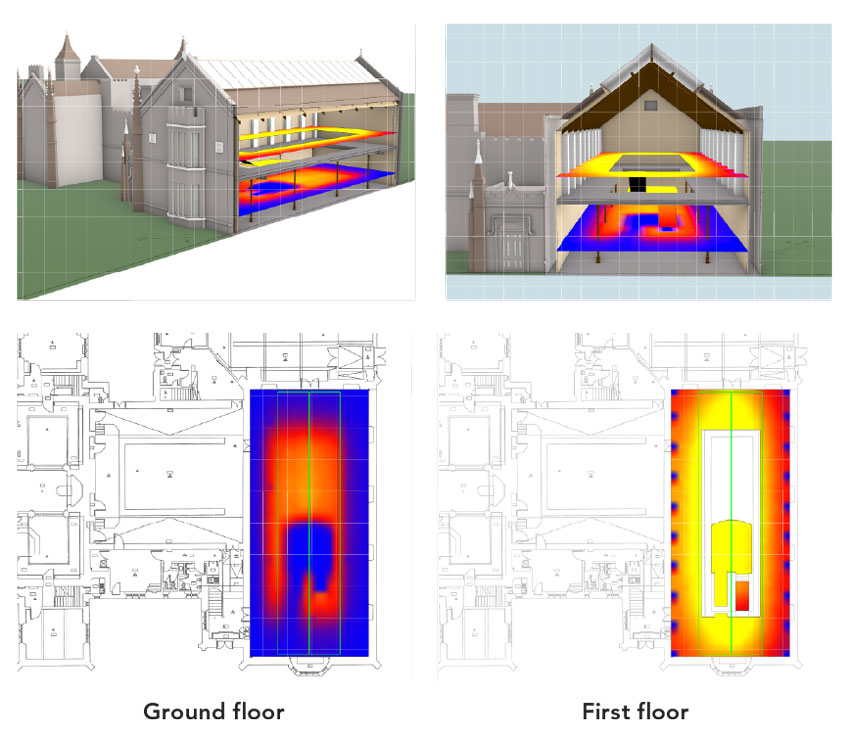Optimizing Daylight in Different Buildings
While all of the above have been useful, the newest generation of daylighting software combines all of the above and provides the designers with the most flexibility in setting up simulations. It also provides the best information back for making design decisions and adjustments. It is based on input from drawings or models (electronic or physical) and can help identify ways to create optimal daylighting conditions that benefit the users or occupants of the buildings. It can also provide information related to the thermal performance of the daylighting systems and how they impact the total building energy performance. The latest software allows for a variety of simulations including, annual illuminance, point-in-time, and glare distribution simulations such as UDI, sDA, ASE, and DGP. The results can be used for analysis and documentation to qualify for points under LEED and other green building standards. By including simulations for EML, the needed documentation for WELL points can be achieved based on spectral sky calculations for virtually any location.
The progress made in the software and techniques to simulate daylighting in buildings mean that some excellent tools are available to design professionals to accurately predict daylighting performance in all of its forms. However, there remains a critical point that must not be missed. All simulations are based on the data and values that are input. Weather and climate data generally come from reliable outside sources through the U.S. Department of Energy; the correct location just needs to be entered into the simulation.
The information related to the specifics of the daylighting systems, however, need to come from the design team. This means the data must be properly selected from the intended materials to be used. Often, this requires getting the data from manufacturers. In these cases, it is critical that the glazing materials in particular have been tested and independently validated for the quality of light that comes through those materials. In addition to simply the percentage of VLT, the spectral distribution (coloration) and the diffusion characteristics need to be known and accurately put into the simulation. Keep in mind that any given manufacturer usually has a range of different products or options that have different daylighting characteristics, which is good to allow customization and fine-tuning of the design. However, it also means that if different products are being used in different parts of a building that the correct values are put into the simulation. Further, when using a combination of products from different manufacturers, recognize that not all manufacturers test and validate their products the same way. Each one needs to be assessed for the correct values to place into a simulation.
As an aid, some manufacturers will offer a service to architects to perform the daylighting simulation using their products and compare it to other commonly known products. This helps assure accuracy of the simulation and saves the architects from needing to maintain a separate daylighting software program. Discussions and review of manufacturer’s capabilities in this regard should be undertaken before using such a service, of course.
Conclusion
Daylighting in buildings has gained increasing significance in recent decades. Human benefits of health and wellness have been documented, and systems have been advanced that help optimize energy performance. At the same time, advancements in the ability to simulate the performance of daylighting designs in buildings now allows architects, owners, and building users to all benefit from sophisticated, balanced, and appealing daylighting design. This all means that designers can put science behind the art of daylighting to show results in advance.
End Notes
1Turan, I., Chegut, A., Fink, D., and Reinhart, C. “The value of daylight in office spaces.” Building and Environment. 15 January 2020. Web. 24 March 2020.
Peter J. Arsenault, FAIA, NCARB, LEED AP, is a nationally known architect, consultant, presenter, and author of more than 200 continuing education courses focused on creating better buildings.






.png)




